The recently opened Birdie is the latest offering from Hong Kong’s 298 Nikuya group and adds to its collection of meat-themed Japanese restaurants. This one is a yakitori specialist focusing on chicken. Birdie is also one of the first restaurants opened in the newly completed H Code building on the Pottinger Street steps in Central. Designed as a high-end restaurant and leisure destination, H Code has notably gentrified its specific location. It’s hard to imagine that the brightly-lit bamboo decorated path to its left was just several years ago the dark, dank access point to the storied club Propaganda, itself known for other kinds of chicken.
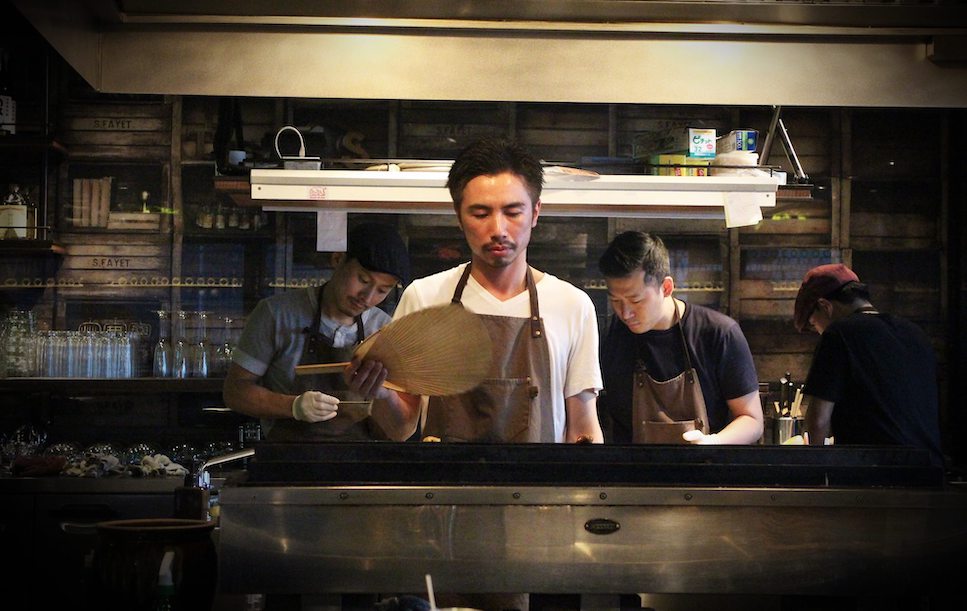
Riding up the industrial-sized lift to the ninth floor brings you to Birdie’s perch at H Code. Diners are then greeted with a poster for a movie called Cocky that depicts a muscular chicken, hands raised like Rocky Balboa and named “Sylrooster Stallone.” If this and other chicken-themed puns fail to impress, the massive charcoal grill in the center of the restaurant with equally large exhaust hood certainly will. The several Japanese chefs hand-fanning the yakitori to optimal completion adds to the Instagram-ready environment.
The menu starts with a page devoted to the yakitori. The balance is devoted to kushiyaki (things on sticks other than chicken), side dishes and drinks. I visited twice since Birdie’s opening, sampling nine of the twelve yakitori items along with some kushiyaki and sides.

The star of the yakitori items is the thigh (HKD45). This stick comes with two succulent morsels of chicken thigh, skin crisped from the charcoal grill. The meat is juicy and full of flavor and goes well with the accompanying lemon, Japanese spice powder and — if you like — the yuzukosho, a paste made from yuzu peel, chili peppers and salt.
In contrast with the thigh, I was disappointed in the “tender” (HKD38), three cubes of chicken breast that are prepared seemingly steamed or poached to a medium rare finish followed by a light sear, rather than cooked on the grill. I am a fan of the raw chicken sashimi one can get in Nagoya and other cities in Western Japan, but the medium rare chicken tender at Birdie was bland and simply seemed underdone.
Beyond the thigh, standout items from the yakitori menu were the neck (HKD40), a stick of boneless segments of rich chicken neck, the gizzard (HKD38), chewy pieces of this thick walled part of the chicken’s stomach and the wing (HKD38), a single crispy appendage pierced by two sticks and served hot from the charcoal grill.

The tsukune (HKD45), basically chicken meatball on a stick, is generally one of my favorite yakitori items and is one of the signatures at Birdie. I found it to be tasty but the texture somewhat smoother, like a Hong Kong fishball, than the more granular tsukune I am used to in Japan. The liver (HKD45) was also good and this time nice with its medium rare finish, though I personally prefer the more typical cube shape as compared to the folded slice at Birdie. The soft bone (HKD38), essentially chicken cartilage, another one of my usual favorites was a bit hard compared to what I am used to on skewers.
Lastly, the “tail” (HKD38), sometimes referred to as chicken butt, the “parson’s nose” or really, just chicken ass, was rich and oily as expected — but I prefer this item when it is served whole rather than severed into smaller halves. The oily flavor could also have been better balanced with more crispness. Frankly, the best chicken tail skewer I can recall eating was at a stall on the road between Chiang Mai and Pai in Thailand, and the literally half-assed pieces at Birdie couldn’t quite compare.
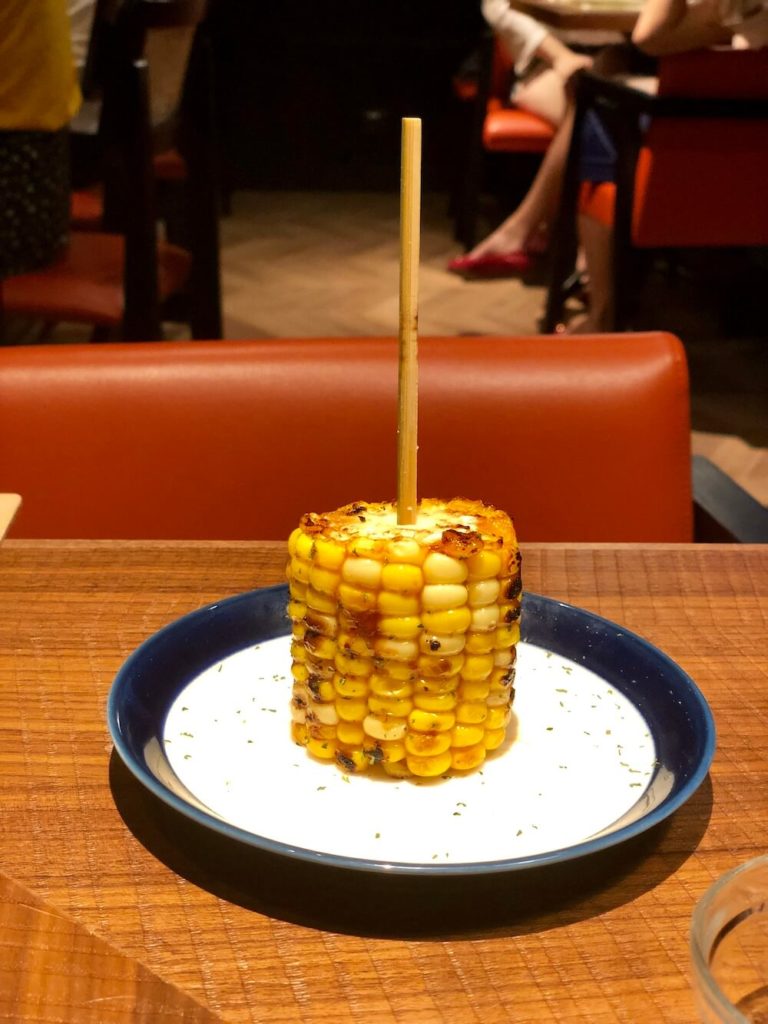
For the kushiyaki items, I tried the pork belly (HKD38) and the wagyu harami (HKD65) along with the corn with butter (HKD30) and gingko (HKD35). Both of the meat items seem to have been prepared in the kitchen rather than on the grill and lacked the charcoal taste. Both were also heavily flavored with a teriyaki or other somewhat sweet sauce. The quality of the beef and pork itself seemed high and I would have preferred these items to have been prepared more simply on the grill.
The vegetables were better. The corn, a half ear on the cob, was crunchy, buttery and seasoned just enough for extra zing but not so much so as to overwhelm the natural taste of the well-cooked kernels. I am always a fan of gingko nuts, with their slightly bitter taste and chewy texture, and those at Birdie were fine, if a little under-salted.
From among the sides, I tried the Japanese fruit tomato (HKD65), the deep fried chicken wing (HKD60), the chicken liver pate (HKD85) and the grilled rice ball (HKD40). I was pleased to see Birdie serving the simple sliced Japanese tomato as it’s exactly the type of side that you might find in Tokyo. The tomato, though on the small side, had an appropriately strong balance of sweet and tangy that is a good complement to the meat. It only lacked some high quality salt for dipping — or even mayonnaise, like you would get in Japan.
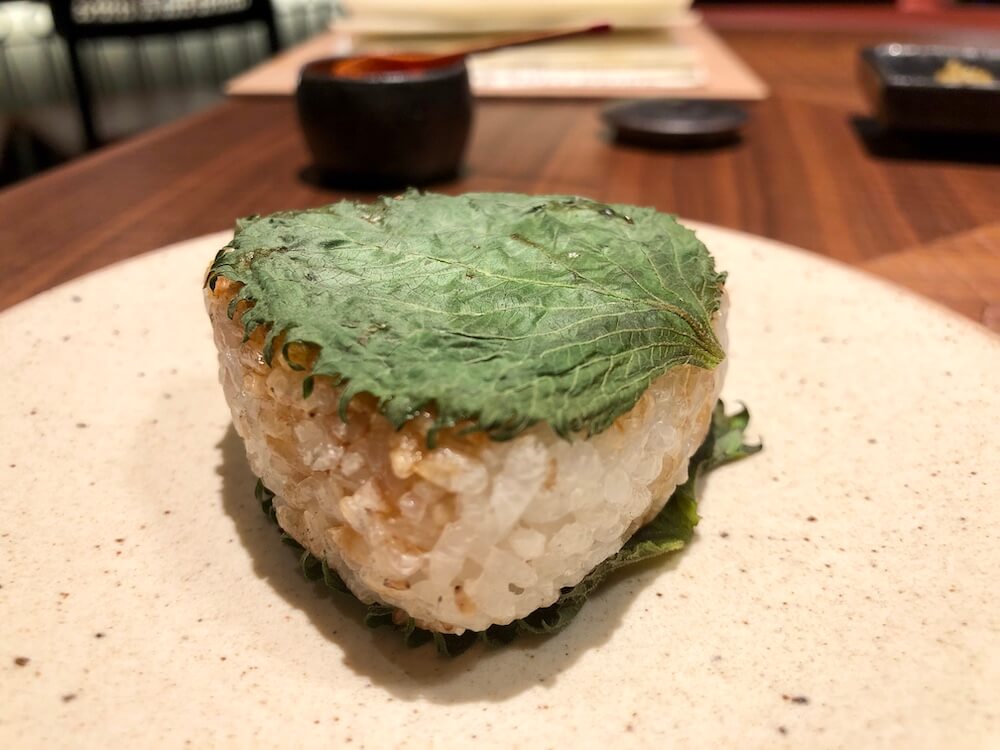
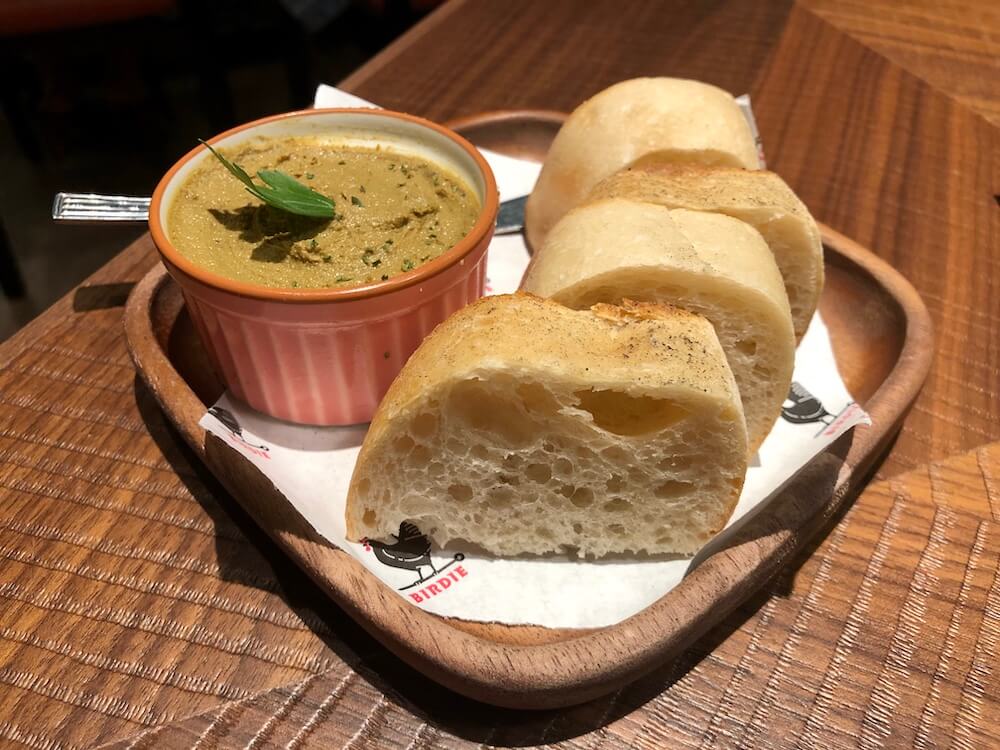
The deep fried chicken wing, though impressively splayed to reveal the bird’s wingspan, was also disappointingly flavored with a sweet sauce; I’d stick to the wing from the yakitori menu. The chicken liver pate, on the other hand, was delicious and ample in quantity, served with four thick slices of toasty bread. The rice ball was also well-prepared on the charcoal grill. The ball is actually a triangular onigiri that is covered on two sides with shisho leaf instead of wrapped in seaweed. The grill imparts smokiness to the shisho-infused rice that works very well.
All in all, I would certainly return to Birdie when the mood for yakitori strikes. The big grill is impressive and it’s fun to watch the preparation. If you stick with the yakitori items — lots of thigh in particular — and are otherwise selective, you will have an excellent meal.
FIND IT:
Birdie is at 9/F, H Code 45 Pottinger St, Central, Hong Kong
Open Monday-Saturday 6pm-1am, closed Sundays
Reservations +852 2789 2881
MTR: Central station, approx. 5 min walk
About the Hungry Lawyer: Marc Rubinstein, born in Baltimore, USA, has been in Asia for 22 years, 16 of those in Hong Kong. He has split his career between banks and law firms, and is currently the general counsel of an Asia-based real estate and alternative energy investor. Marc is a co-founder and co-chair of the Hong Kong Gay & Lesbian Attorneys Network. In addition to being a hungry lawyer, he has run three marathons, nine half-marathons, completed the Hong Kong Oxfam Trailwalker and won the U.S. National Debate Tournament way back in 1991.
Other reviews by Coconuts’ Hungry Lawyer:
The Hungry Lawyer: Hotal Colombo is the chic new addition to Hong Kong’s Sri Lankan food scene
The Hungry Lawyer: Quirks, kitsch, and great Ukrainian food at Ivan the Kozak
The Hungry Lawyer: Spanish restaurant Pica Pica delivers on trend-transcending tapas
The Hungry Lawyer: From Stockholm to Hong Kong, Björn Frantzén’s The Flying Elk
The Hungry Lawyer: Laos Sisombath, a slice of the Lao countryside in Hong Kong
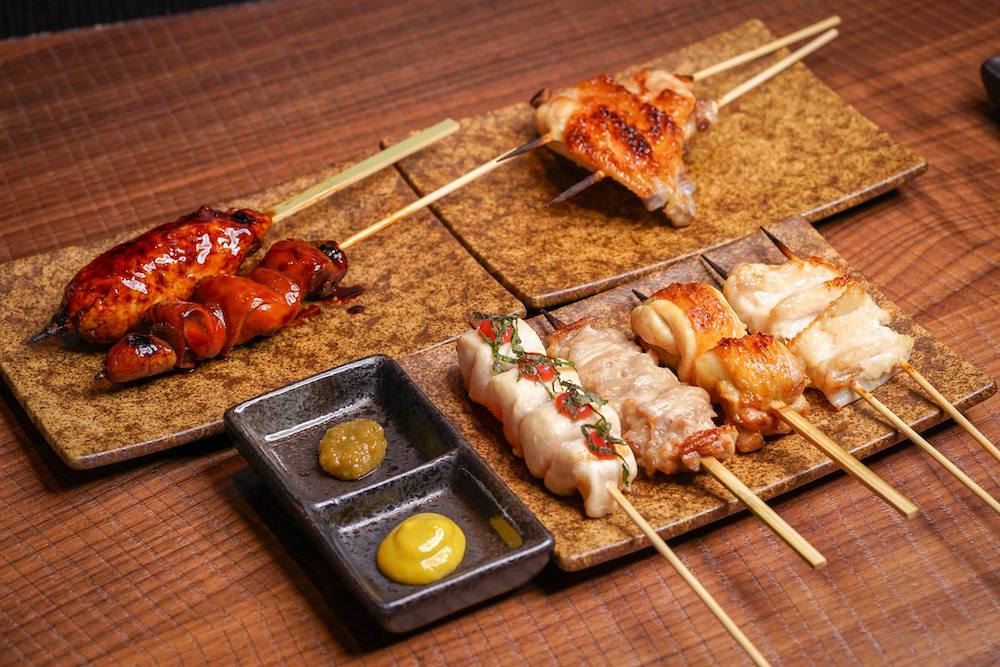




Reader Interactions